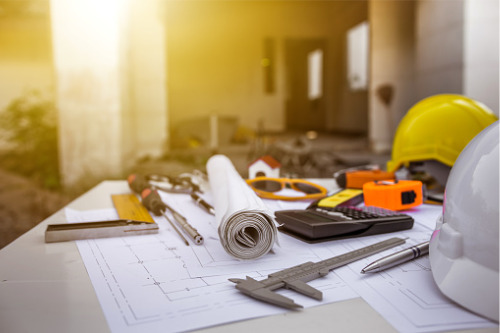

With the effects of Earth’s climate change, design and construction professionals can no longer rely solely on historic weather data to determine the design standards they must meet. Today, architects and engineers are under pressure to incorporate forward-looking climate data, pass new government regulations, and meet owners’ expectations in order to build infrastructure, facilities and landscapes that are resilient against ever-intensifying climate challenges like flooding, precipitation and other weather events.
In 2018, New York City acknowledged the challenges the city faces from a rapidly changing climate – in particular, sea level rise across the city’s 520 miles of coastline – by releasing an official set of Climate Resiliency Design Guidelines to instruct architects, engineers and those involved in the construction and renovation of New York City buildings on how to make buildings more climate resilient.
“The primary goal of the Guidelines is to incorporate forward-looking climate change data in the design of City Capital projects,” the City explained in Version 4.0 of the Guidelines, released in September 2020. “Codes and standards that regulate the design of facilities incorporate historical weather data to determine how to design for today’s conditions. However, historic data does not accurately represent the projected severity and frequency of future storms, sea level rise, heat waves and precipitation.”
With similar projects and discussions happening countrywide, architects and engineers across the United States are now working to navigate this recent trend. With the change in climate, architects and engineers need to consider their standard of care to incorporate more climate resiliency. In turn, they are potentially opening themselves up to new exposures.
“We support architects and engineers who are incorporating climate resiliency, sustainability and associated new regulations into their work,” said Jim Bechter, Senior Vice President for Architects, Engineers and Contractors Professional (AE/CP) at Tokio Marine HCC – Cyber & Professional Lines Group. “We have to be aware of cutting-edge issues to help our insureds make sure they’re not taking on contractual obligations that might exceed their capabilities. In any formal agreement, architects and engineering firms should avoid obligations that exceed their professional standard of care, nor provide warranties and guarantees beyond what an architect or engineer should have to provide.”
Architects and engineers have always dealt with challenges around sustainable development and designing for weather-related events. Any time they take native soil and cover it with concrete and asphalt, they are disrupting the natural balance of water infiltration and potentially creating runoff that can cause downstream flooding. Being a creative, problem-solving group of professionals, architects and engineers have found solutions to these challenges. But today, the sheer scale and immediacy of climate-related issues are creating new obstacles.
“We’ve been seeing catastrophic weather events throughout the US. There have been on-going droughts and wildfires on the West Coast and rising sea levels,” said Steve Hansen, Vice President for AE/CP at Tokio Marine HCC – Cyber & Professional Lines Group. “In Houston, Texas, they had three 500-year storm events in the last five years, not to mention the crippling freeze they recently experienced. Architects and engineers are having to take these events into consideration, which influences our underwriting decisions, especially when it comes to the location of a risk.”
Tokio Marine HCC – Cyber & Professional Lines Group is one of the nation’s leading insurers of design and consulting professionals. The architects and engineers professional liability insurance provides coverage for allegations of negligence against firms in their performance of professional services in disciplines such as architecture, engineering, surveying and construction management. Coverage is offered on a claims-made and reported, duty to defend policy form with flexible limit options up to $5,000,000.
The Cyber & Professional Lines Group has a wide risk appetite and is open to supporting design and construction professionals who are tackling sustainability issues, including those involved in Leadership in Energy and Environmental Design (LEED) programs, as well as alternative energy projects such as solar. Oftentimes, these projects are underpinned by innovative technology, which comes with its own set of risks.
“With every new proposal or developing technology, underwriters will always have some concern around the efficacy of these new methods,” Bechter told Insurance Business. “Architects and engineers should avoid agreeing to obligations that they may not be able to fulfill with cutting-edge technology because that increases their exposure. Generally, architects and engineers professional liability insurance doesn’t cover the contractual obligation; it covers the professional standard of care. So, with these new developments in technology that purport to provide these great benefits, it always puts a little more risk on the underwriter, which may be reflected by the insurance market with higher premiums.”
